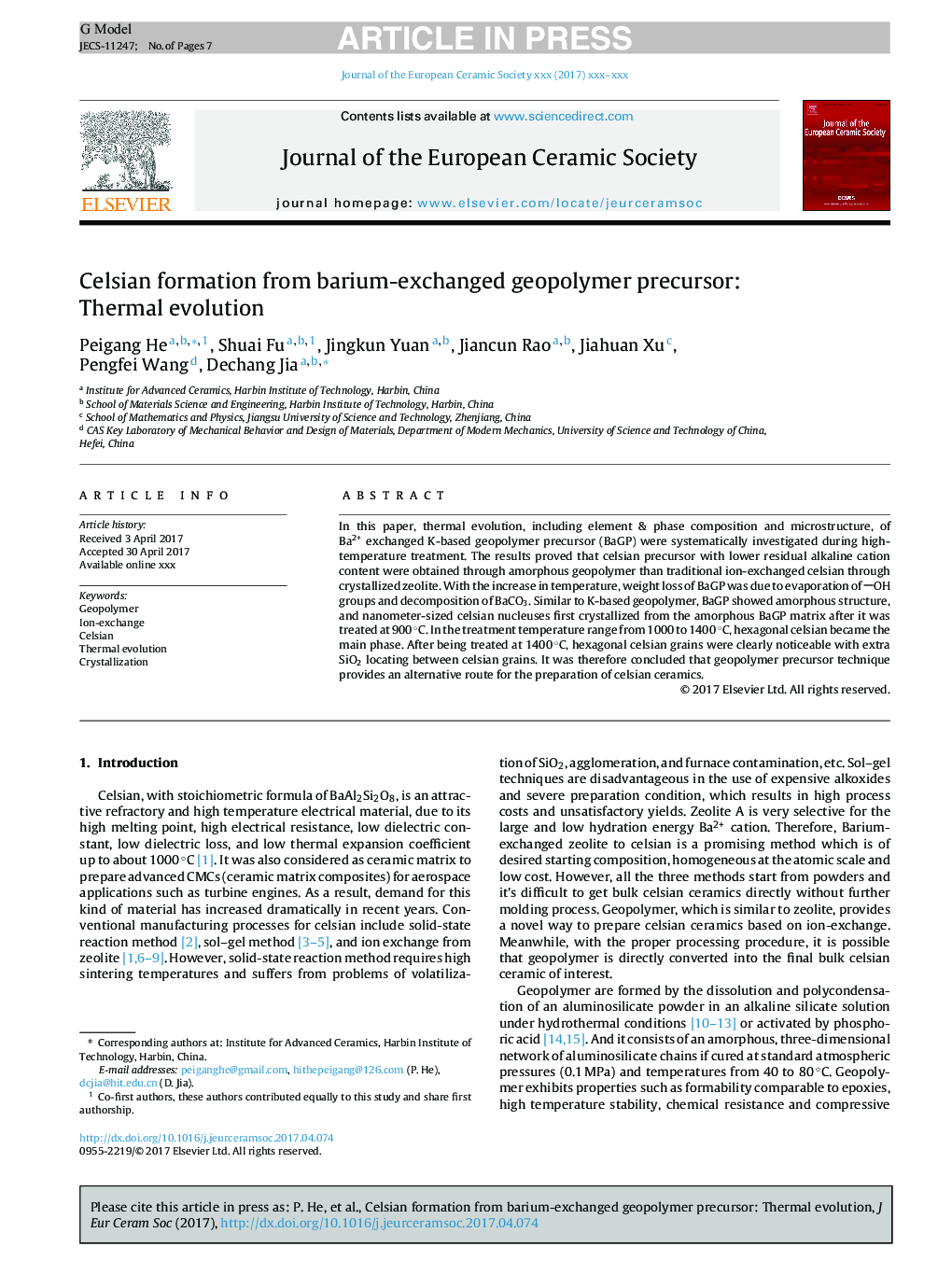| Article ID | Journal | Published Year | Pages | File Type |
|---|---|---|---|---|
| 5440455 | Journal of the European Ceramic Society | 2017 | 7 Pages |
Abstract
In this paper, thermal evolution, including element & phase composition and microstructure, of Ba2+ exchanged K-based geopolymer precursor (BaGP) were systematically investigated during high-temperature treatment. The results proved that celsian precursor with lower residual alkaline cation content were obtained through amorphous geopolymer than traditional ion-exchanged celsian through crystallized zeolite. With the increase in temperature, weight loss of BaGP was due to evaporation of OH groups and decomposition of BaCO3. Similar to K-based geopolymer, BaGP showed amorphous structure, and nanometer-sized celsian nucleuses first crystallized from the amorphous BaGP matrix after it was treated at 900 °C. In the treatment temperature range from 1000 to 1400 °C, hexagonal celsian became the main phase. After being treated at 1400 °C, hexagonal celsian grains were clearly noticeable with extra SiO2 locating between celsian grains. It was therefore concluded that geopolymer precursor technique provides an alternative route for the preparation of celsian ceramics.
Related Topics
Physical Sciences and Engineering
Materials Science
Ceramics and Composites
Authors
Peigang He, Shuai Fu, Jingkun Yuan, Jiancun Rao, Jiahuan Xu, Pengfei Wang, Dechang Jia,
